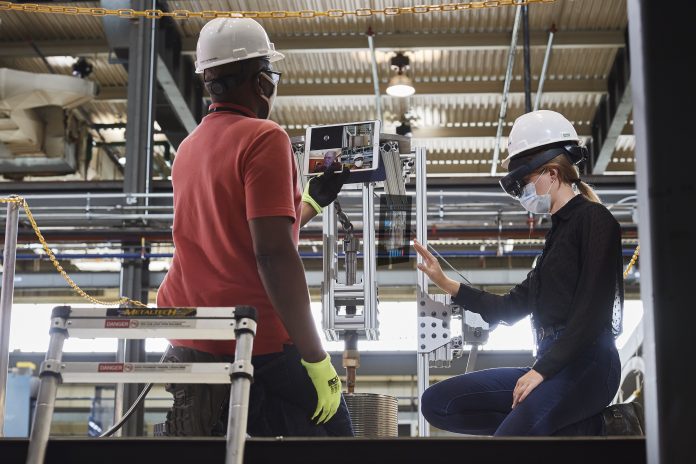Many of the businesses that have survived – and even thrived – in these extraordinary circumstances are organisations that have digital technology at their heart. Or, at least, a plan to put it there, says Sam Stephens, chief engineer at Atkins
I think we would all agree that 2020 isn’t the year we imagined it would be. In recent months, our lives have been changed by the Covid-19 pandemic. As individuals, we’ve had to find new ways to relate to people to keep ourselves and others safe. Organisations have been forced to adopt new ways of working, and entire industries have been reshaped by events that are outside of our control.
In the nuclear sector, we’ve faced the challenge of continuing our work on aging assets with limited access to up-to-date information on the condition of the site. We’ve also had to ensure we carry out the proper checks on new equipment so it can be delivered to clients on time, despite being unable to bring the relevant experts together in-person as part of the review, troubleshooting and approval process.
In all cases, new digital tools have enabled us to complete the work on schedule and bring costs down. If having a digital strategy had been optional six months ago, it’s certainly not now.
A robust digital strategy
If organisations have a robust digital strategy, it will also help them meet the challenges of the future. As we all know, safety is the number one priority on every nuclear site. The environment we work in is unique and we have to ensure we do everything we can to keep the risks to our people as low as reasonably practicable. Technology has been, and will continue to be, a key part of our approach.
In the new build sector, the costs associated with building new nuclear reactors is significant and developers are under pressure to maximise the value of the investment. EDF is seeking to replicate much of the design from Hinkley Point C in Somerset in England to reduce costs at the proposed Sizewell C power station in Suffolk. How the data from the design and build of the first plant is gathered, aggregated, stored and shared will be crucial to success of the second.
Similarly, the industry is seeing the opportunity to rethink its approach to decommissioning nuclear assets in light of increasing costs of maintenance and lower costs of capital compared to a decade ago. If the organisations responsible for that work, along with their partners and supply chain, have a digital strategy, it will enable them to gather the data they need to optimise projects and capture learning to improve delivery of future projects.
Embracing technological opportunities
Fortunately, many of the companies we work with have already embraced the opportunities that technology offers and recent lockdowns have accelerated some of their moves towards a digital future. But given the pace of change, is there really a way to create a digital strategy that will stand the test of time?
Firstly, organisations need to recognise what their core skills and business priorities are and be prepared to collaborate with others to find the best solution to their challenges. A digital strategy can help organisations differentiate between the core capabilities they need to retain or develop in-house and the initiatives that should be supported by the supply chain.
It’s easy to be side-tracked by new and exciting technologies, where you fall into the trap of looking for a problem that a new product can solve. There are plenty of gadgets and tech out there to test out, but the hard part is deploying proven technology that can be seamlessly integrated into ways of working so that everyone can use it.
Finally, companies should also be innovative in their approach to their digital strategies. Instead of focusing on the technology, they should think about how existing or emerging tools can support or disrupt their business model, commercial approach or technical delivery. A digital strategy should not be a bolt-on; it should be at the core of how value is delivered to the customer.
New ways of working
To bring all this together requires a shift in mindset towards new ways of working and business investments. While “agile” has become a cliché, there are lessons that can be learned from the tech industry, particularly the mindset towards deploying solutions that are then tested out and improved continuously.
For an industry that is focused on getting things right first time this is a big challenge, which a digital strategy can help overcome. By using data more effectively throughout operations, we can better assess risk and therefore identify ways to reduce it, but also use that data to optimise solutions and experiment with different approaches.
With Covid-19 becoming part of everyday life for the foreseeable future, we have a window of opportunity to adopt these new ways of working. And with that we should be better placed to not only survive whatever challenges are faced, but thrive during and after the pandemic.
Sam Stephens
Chief engineer
Atkins
+44 (0)20 7121 2000
Twitter: atkinsglobal
LinkedIn: atkins
YouTube: wsatkinsplc














